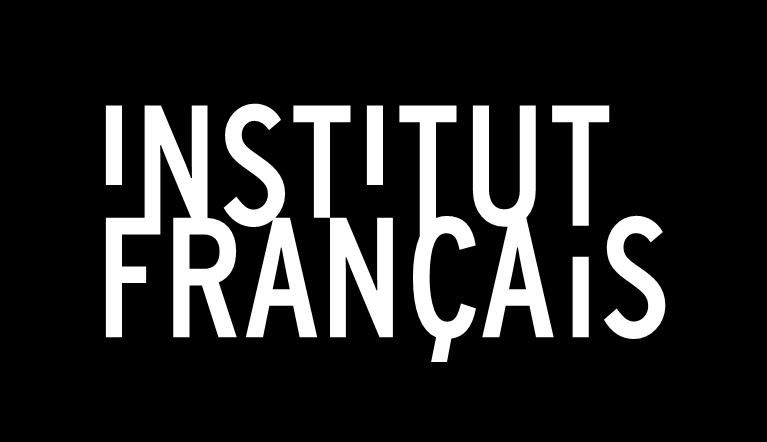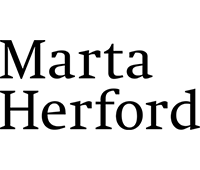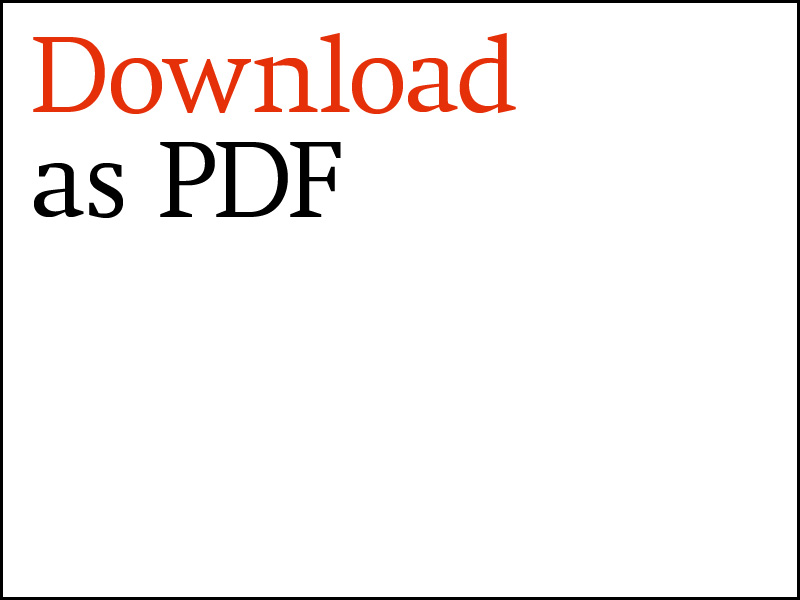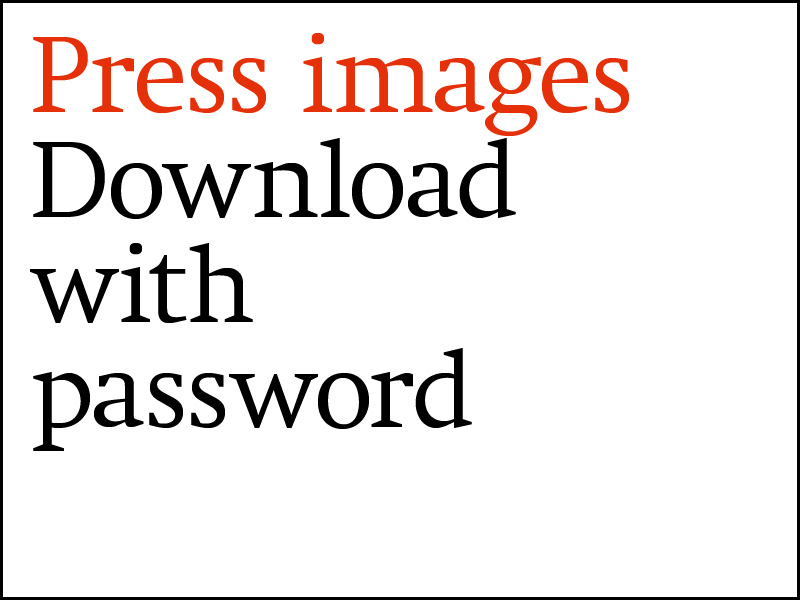Press release
Press conference: Thu, 25. 1. 24, at 11 am
The first exhibition of 2024 at the Marta Herford is the group show Annem işçi – Who Sews the Red Flags? (27. 1. 2024–20. 5. 2024) in the Lippold Gallery. “Annem işçi”, in English “My mother is a worker” tells of “guest workers” and artists cooperating to combat discrimination, racism, and violence. It begins with feminist and political alliances of the 1970s. The exhibition brings together films, paintings, prints, photographs, an installation, and texts, some of which were produced in West Germany, which was then still a young nation, but their subject matter is still topical today. It asks what foreignness means half a century later and in which roles we live in the community. The project, which presents nine artists, including Nil Yalter, Gülsün Karamustafa, and Monika Sieveking, is curated by guest curator Gürsoy Doğtaş.
On the one hand, in their works the invited artists tell their own stories about being migrant workers, about feelings of yearning, foreignness, and collegiality; others, such as Monika Sieveking and Gerdt Marian Siewert, look at events from the outside and work in a social-realist manner.
In her work the artist and feminist Nil Yalter addresses migrant workers in Germany but also in Belgium and France. In the series “Turkish Immigrants” (1977), the artist lends migrant workers a voice but also through photography and drawing gives them a face. However, the faces of those portrayed dissolve, as do the memories of them, whether in her drawings or many years later when the Polaroid photos pixelate. In addition to the groups of works exhibited in the Lippold Gallery, the artist is also creating works for the Marta Billboard and for an advertising space on Lübberlindenweg, at the corner of Mindener Str. 120. Yalter, who is being awarded a Golden Lion for Lifetime Achievement at the Venice Biennale this year, emigrated from Istanbul to Paris in 1965, not as a worker but in order to take a new direction as an artist.
The work “1977 First of May (Woman Constantly Sewing Red Flags with Her Sewing Machine)” (1977) shows a seamstress at her sewing machine, surrounded by red fabric. With this poster, the artist Gülsün Karamustafa is alluding to workers’ protests of the rising neo-fascist movement in Istanbul on May 1, 1977. The day has entered the history books as “Bloody May First” as a result of violent and deadly conflicts between the police, politicians, and protestors. Karamustafa’s work not only revolves around central themes such as nation, patriarchy, class, and inland migration in modern Turkey but also establishes a unique political aesthetic. She draws attention marginalized members of society. The works of this artist, who lives in Istanbul and Berlin, have been shown at numerous biennials (e.g., Venice, Istanbul, São Paolo) and in documenta 14. In 2021 Karamustafa was awarded the renowned Roswitha Haftmann Prize. This year she will exhibit in the Turkish Pavilion at the Venice Biennale.
In her poetry, the writer Semra Ertan probed the contradictory, sometimes unspoken expectations of her milieu, asymmetries of social power, and gender inequality as well as her status as a so-called foreigner. The writer moved to Kiel in 1971 at the age of fourteen. That was also when she took up writing. In the untitled poem shown in the exhibition, which the author wrote in Turkish, Ertan declared her solidarity with the working class and honored the achievements of her parents. Ertan was active in the struggle against racism and was posthumously awarded the Alfred-Döblin-Medaille for lyrics in 2021. In the summer of 2023, a square in Kiel was named after her.
The portfolio of prints “Das Schicksal der Frauen” (Fate of Women) (1977) by the artist Mehmet Güler was made in the year that he decided once and for all to move to Kassel in order to live and work in Germany permanently. The exhibited etchings are distinguished by the planar application of bright colors. Red or red-and-orange meet with cooly shimmering blue or other contrasting colors. Such paint application is typical of Güler’s work, as are modern worlds meeting the traditional rural life of Anatolia. Striking silhouettes of figures convey various states of mind and suggest constellations of actions. Güler has been presented in more than 200 solo exhibitions in Germany and abroad. His painting “Genuss der Hitze” (Pleasure of Heat) (2019) was acquired in 2020 for the art collection of the German Bundestag.
In Monika Sieveking, the exhibition includes an artist who showed her solidarity with migrant workers early on. For her “Gruppenbild mit Siemensarbeitern” (Group Portrait with Siemens Workers) (1977), workers from the company came to her studio, where Sieveking portrayed them. The artist always involved the participants in the process of making her works, which allows for a more subtle perception of the quotidian. “Auf dem Flur der Direktion” (In the Corridors of Management) (1974) shows where the workers negotiate their working conditions and have a dialogue directly with the executive floor. The image speaks both of structures of dependency and of self-empowerment.
The painting “Gastarbeitende Akkord-Stanzerin: tagtäglich bis zu 5000 Chassis für Farbfernsehgeräte” (Migrant Doing Piecework as a Puncher: As Many as 5,000 Chassis for Televisions Daily) (1974) by Gerdt Marian Siewert, who trained as a photographer and later worked as a painter, is being shown. This photorealist portrait shows a female worker from behind. The painting has a strong historical character: from the open BILD newspaper with the headline “Germany is not yet lost,” to the checked overall of the woman with black-hair, and the poster of a city by the sea next to the machine, which appears to refer to the woman’s hometown. The painter is one of the artist’s most important works. He was born in 1920, the son of a tailor and a seamstress. After 1945, Siewert lived in East Berlin, where until 1959 he worked as a stage and press photographer for the opera and the circus. After escaping to West Germany, he initially continued his career as a photography but also drew frequently and published in the satirical magazines Pardon and Spontan, among other places.
In 1966, Asimina Paradissa left Greece to start a new life in West Germany. She occupies a special place in the exhibition: she is both a worker and a photographer. After her first job at the Olympia-Werke a typewriter factory in Wilhelmshaven, Wuppertal became the center of her life and work. There she worked first for the Küpper hat factory and the Elora wrench factory, then for thirty-two years for Bomoro, which supplies automobile locks to VW, Ford, and Mercedes. Her personal photographs document her life in factories, in the dormitory, and in her free time with colleagues and friends but they are also a way of reappropriating the image of the worker and hence her own image.
One special item of attention in the exhibition is a mural – “Rote Zukunft“ (Red Future) (2024)– by the artist Serpil Yeter that she designed especially for the exhibition and painted directly on a wall in the Lippold Gallery. It shows the rebellion of a worker in a textile factory. When Yeter moved from Turkey to Berlin in 1980, she began to paint what she observed in her surroundings: lonely Berliners with their dogs, workers in the subways after work, and punks. In addition to such everyday scenes, she recorded the sense of “feeling foreign” of people who had moved to Berlin from afar. She defined her task as an artist as showing people the possibilities of coexistence and contributing to respect of differences between cultures. Other works by Yeter will be prominently featured beginning in mid-April of this year in the exhibition “Kunst in der Zeit der Vertrags- und Gastarbeit” (Art in the Age of Contract and Migrant Work/ working title) at the MMK in Frankfurt am Main.
The artist and curator Nuray Demir is represented by a multi-part installation “Together“ (2024). It consists of workers’ overalls applied to the wall: a recreation of a break-room situation with chairs, a set table, on which lies a Turkish translation of The Communist Manifesto, and a mop whose head has been replaced by a red flag. With the installative interventions Demir is alluding to migrant workers and their rights in the German labor system. The artist’s works are characterized by her critical look at social exclusion and complex hierarchical relationships. Her work presents artistic vexations and counterpositions and thus creates a space for ideas and empowerment for social equality. Demir has realized projects at diverse institutions, such as the Bundeskunsthalle in Bonn, the Haus der Kulturen der Welt in Berlin, and the Wiener Festwochen.
In Annem işçi: Who Sews the Red Flags, the Marta Herford looks back at a time when the first large migration movement after World War II expanded White German urban societies. It represents an important foundation for current debates and at the same time asks where the society stands today. The guest curator who was invited for this project, Gürsoy Doğtaş, does research as an art history at the intersections between institutional critique, structural racism, and queer studies. In 2022 and 2023, he was a visiting professor at Institut für Kunst in Kontext at the Universität der Künste in Berlin. In 2023 Doğtaş curated the exhibition “Gurbette Kalmak / Bleiben in der Fremde” (Staying in a foreign land) at the Taxispalais in Innsbruck. This year he will be a guest curator at the MMK in Frankfurt am Main.
Artists
Nuray Demir, Semra Ertan, Mehmet Güler, Gülsün Karamustafa, Asimina Paradissa, Monika Sieveking, Gerdt Marian Siewert, Nil Yalter, and Serpil Yeter
Exhibition sponsors


Dates
Fri 26. 1., from 6 pm, Opening Welcome: Marta Director, Kathleen Rahn. Followed by a welcome from Patrick Puls, Deputy Head of the Social Department of the Hanseatic City of Herford, and an introduction to the exhibition by guest curator, Gürsoy Doğtaş
Sun 3. 3., 2 pm, Im Marta mit… Dialogue tour (in German) with Selda Özen (Integration Agency – Anti-Discrimination Service Point), Vural Ipek (Chairman of the Integration Council of the Hanseatic City of Herford) and Anna Peplinski, Head of Education and Outreach, Marta Herford
Fri 8. 3., 7 pm, Poetry Slam Evening on International Women’s Day In the moderated literary competition, slam poets Daniela Sepehri (Paderborn), Shafia Khawaja (Hamburg) and Meral Ziegler (Düsseldorf), among others, will compete against each other on stage in the Marta Café with texts they have written themselves.
Sun 12. 5., 2 pm, Im Marta mit… Dialogue tour (in German) with the exhibition curator and art historian Gürsoy Doğtaş
Sun 19. 5., 11 am to 6 pm, International Museum Day at Marta with a special programme for young and old and free admission to the exhibition.
(Date to follow) Sohrab Shahid Saless: “Recipient Unknown” (1983) – film screening followed by a discussion between Vivien Buchhorn (Shahid Saless Archive) and Nina Tabassomi (Taxispalais, Innsbruck) about the cinematic work of the Iranian-German film director and screenwriter Saless (1944-1998).
(Date to follow) Nuria Cafaro (University of Cologne/Cologne Women’s History Association) on the work and strikes of “guest workers” in Germany: In a lecture accompanied by pictures and video, the historian presents the situation of so-called guest workers, especially women, in Germany in the 1960s and 1970s and reports on their initiatives and struggles for more self-determination, recognition and equality.
Press Information
This press release and print-quality press photographs related to the exhibition can be found at the press area at http://presse.marta-herford.de/en/ausstellung/annem-isci
The password for the press area is: M4rt4pr3ss3
We are pleased to arrange conversations about the background and interviews. For this and all other information we are available at the telephone number +49 (0) 5221-99 44 30-27 or by e-mail to mailto: presse@marta-herford.de
Social Media
Hashtags: #AnnemIsci #MartaHerford
Twitter: @martamuseum
Facebook: /MartaHerford
Instagram: @martaherford
YouTube: Marta Herford
Exhibtion Information
Annem işçi – Who Sews the Red Flags?
Director
Kathleen Rahn
Curator of the Exhibition
Gürsoy Doğtaş (guest curator)
Assistance
Friederike Korfmacher (curatorial assistant, Marta Herford)
Exhibits
Collage, print, film photography, installation, poetry, painting
Artists
Nuray Demir, Semra Ertan, Mehmet Güler, Gülsün Karamustafa, Asimina Paradissa, Monika Sieveking, Gerdt Marian Siewert, Nil Yalter, and Serpil Yeter
Publication
In lieu of a publication, a communicative brochure with information about the works and the artists will be available in the exhibition.
Exhibition Area
ca. 320 sq. m.
Dates
27. 1. 2024 – 20. 5. 2024
Venue
Marta Herford, Goebenstraße 2–10, D-32052 Herford
Advertising space on Lübberlindenweg, at the corner of Mindener Str. 120
Hours
Tue–Sun and public holidays 11 am to 6 pm, Wed 11 am to 8 pm
Contact/Info
www.marta-herford.de, info@marta-herford.de
Tel.: +49-5221-99 44 30-0, Fax: Tel. +49-5221-99 44 30-23
Blog
www.marta-blog.de
Marta-Partner
Marta Supporters
Hanseatic City of Herford, Marta Freunde und Förderer e.V.
Corporate Premium Partners
Sparkasse Herford, Wemhöner Surface Technologies GmbH & Co.
Corporate Partners
Hettich Unternehmensgruppe, imos AG, INOMETA GmbH, PETER/LACKE GmbH, Schaper Elektrotechnik GmbH & Co. KG, BRAX Leineweber GmbH & Co. KG
Founding Partners
State of North Rhine-Westphalia, Hanseatic City of Herford
Media and Advertising Partners
Zeitungsverlag Neue Westfälische GmbH & Co. KG, fine print – digital druck GmbH, T+A elektroakustik GmbH & Co. KG
Culture Partner
WDR 3
Marta Patronage Fund for New Art
Hettich Unternehmensgruppe, Leo and Ulrike Lübke, Joachim and Elisabeth von Reden, Schaper Elektrotechnik GmbH & Co. KG, Sparkasse Herford, Guido Strunck, Wemhöner Surface Technologies GmbH & Co



